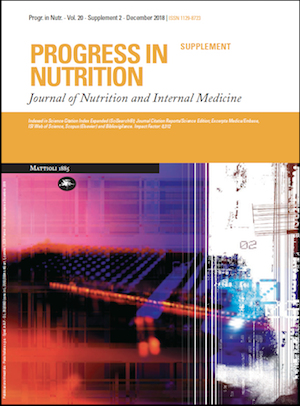Adipokines and Visceral Adiposity Index in relation to clinical findings of NAFLD patients
Main Article Content
Keywords
Nonalcoholic Fatty Liver Disease, Visceral Adiposity Index, Adipokines, Omentin-1, Vaspin, Liver Enzym
Abstract
Objective: The present study aimed to investigate the concentrations of some adipokines and their relationship with clinical findings of patients with nonalcoholic fatty liver disease (NAFLD). Additionally we measured the visceral adiposity index in relation to clinical characteristic of patients. Methods: This study was a cross-sectional study in 83 NAFLD patients. Plasma levels of omentin-1e-1, vaspin were measured. Anthropometric indices metabolic status was assessed. Visceral adiposity index and atherogenic index of plasma were calculated according to suggested formula. Results: Plasma omentin-1 levels directly correlated with weight of patients (p<0.05). Similar association was found for hip circumference (p<0.05). Plasma levels of omentin-1 did not correlate with fasting blood sugar (FBS) or HOMA-IR (Homeostatic model assessment). We found that omentin-1 correlated positively with the NAFLD severity. In correlation analysis, the level of vaspin was found to be directly correlated with plasma insulin (p < 0.05). In addition, in male patients; vaspin value was in positive strong association with HOMA-IR (<0.001). In addition in both genders, VAI (visceral adiposity index) and AIP (atherogenic index of plasma) are in strong direct relationship with ultrasound findings of patients. Conclusions: In the present study, we demonstrated gender-dependent differences in adipokines concentration; women had higher levels of omentin-1 and vaspin. Additionally we observed that an increase in body fat, weight often leads to increased secretion of adipokines that in turn worsen metabolic NAFLD disease. In this regard, we found a direct correlation between vaspin levels and ALT (alanine aminotransferase) activity in female patients. Interestingly, omentin-1 was in positive association with severity of disease reflected by ultrasound observations. In addition, an abnormal level of circulating lipids, which is reflected by atherogenic index of plasma, is in significant direct correlation with ultrasound grading of liver disease. Another novel finding of this study is that AIP is associated with AST (aspartate aminotransferase) activity.






